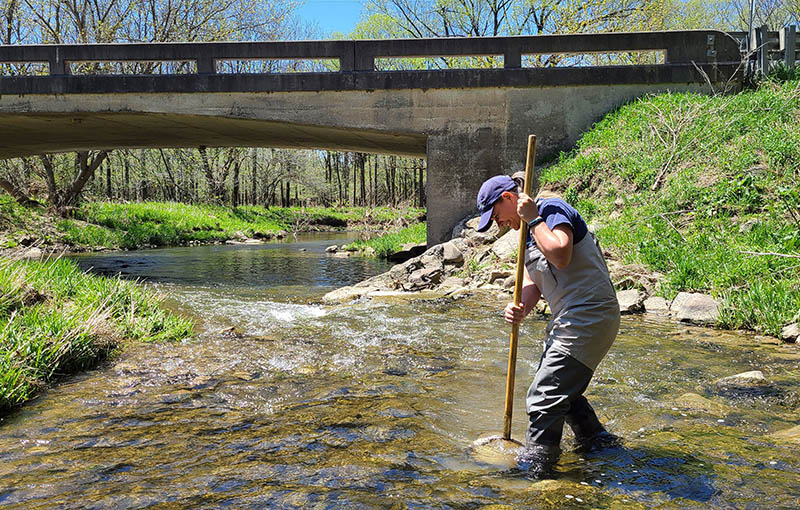Bugs tell the Water Quality story (UTRCA weekly, July 15, 2022)
The spring benthic sampling season has come and gone, with many people not knowing it was happening or even what it is. Ontario’s Conservation Authorities monitor the health of watercourses in our watersheds in a number of ways, and one program involves sampling benthic macroinvertebrates – the “bugs” that live along the bottom of streams, rivers, and ponds.
There are three components to the Upper Thames River Conservation Authority’s (UTRCA) benthic sampling program:
- collecting benthic invertebrates from the bottom of a watercourse,
- identifying those bugs (usually under a microscope), and
- calculating a water quality score for the watercourse based on the species of bugs that were found there.
Michelle Fletcher, UTRCA Aquatic Biologist, filled us in on the process. Follow her at UTRCAaquaticbio on Instagram and Twitter!
“To begin, for three minutes we walk in a zig zag pattern across the stream or river, moving upstream while kicking or scraping our feet along the bottom. This action dislodges aquatic bugs from the rocks and other substrate on the bottom. The bugs begin to float downstream and are caught in a net we hold in the water, just downstream of our feet. Once the three minutes are up, we transfer everything in the net into a sample jar and preserve it.

“Later in the year, we identify the samples in the laboratory at the Watershed Conservation Centre. We wash each sample to free it from preservative and any fine sediment, then pick out the bugs, identify them under a microscope, and record them in a spreadsheet or database.
“These bugs are referred to as macroinvertebrates because they can typically be seen without the aid of magnification. To identify them, though, we need to look at key features, such as mouth parts or gills, which requires the light and magnification of a microscope.
“We can then generate a water quality score for each monitoring location and each watercourse, based on what bugs we collected. In the UTRCA watershed, each species of benthic invertebrates has a score, between 1 and 10, that indicates how tolerant it is to poor water quality. A high score indicates the species is very tolerant of poor water quality and can live in a wide range of water conditions. A low score indicates it is not tolerant of poor water quality and would typically be found in water that is cleaner, cooler, and more oxygenated.
“Impacts to water quality can often be intense but short lived. For example, if a pollutant spills into a watercourse, it may clear from an area once the pollutant stops spilling and clean water from upstream flows through. Collecting a water sample in the hours or days after a spill might not reflect that a pollutant had been spilled. But the bugs that live on the bottom of the watercourse are there for months, as they develop through several life stages. They are impacted by the water quality experienced over that longer time period, which makes them good indicators of longer term water quality.”
Benthic invertebrate sampling results, total phosphorus, and bacteria (E. coli) are the three indicators used to assess water quality for the Upper Thames River Watershed Report Cards. These indicators are given equal weight in determining the overall surface water quality score for each of the 28 subwatersheds. UTRCA staff are currently working on the 2022 edition of the report cards, which are produced every five years.

